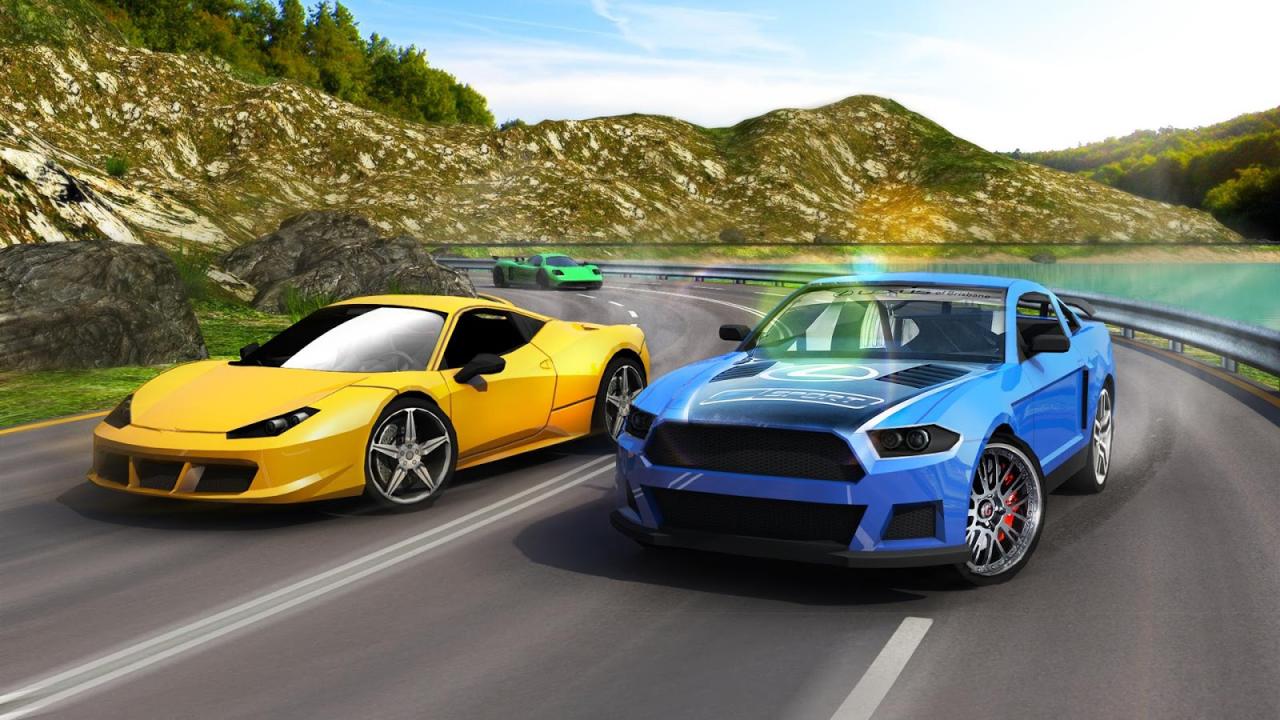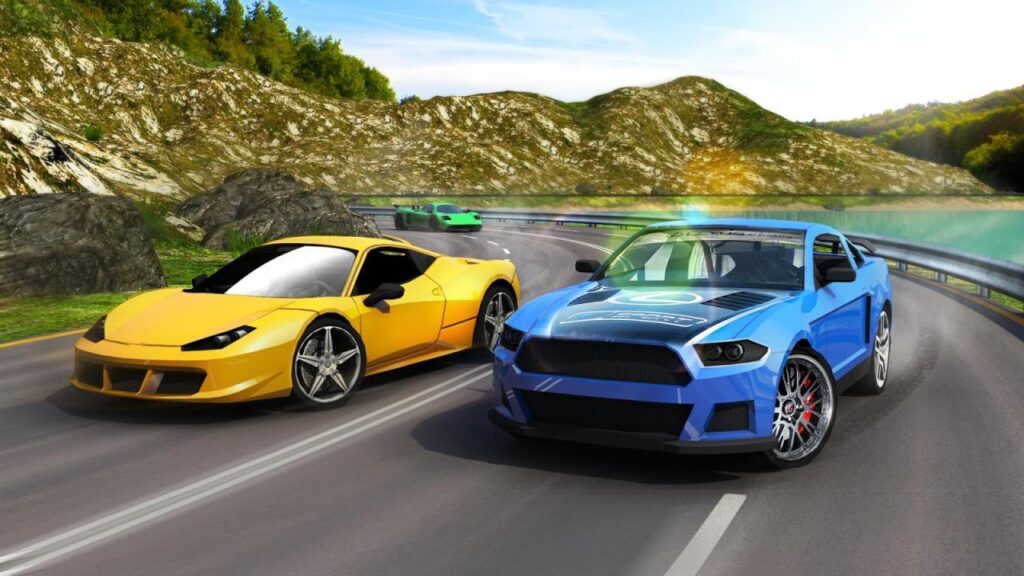Car games have captivated players of all ages, offering an exhilarating blend of speed, skill, and strategy. From the adrenaline-fueled excitement of racing to the meticulous details of simulation, the world of car games is rich with diverse genres that cater to every gaming enthusiast. Players can immerse themselves in arcade-style fun or dive deep into realistic driving experiences, each delivering unique mechanics and thrills that keep gamers coming back for more.
This exploration will take you through the various types of car games, shedding light on popular titles within each genre. We’ll also delve into the intricate process of game development, unveiling the key elements that contribute to creating a realistic and engaging car game. Finally, we’ll discuss the vital community and multiplayer aspects that enhance player interactions and competitions, making car games a vibrant and dynamic part of the gaming landscape.
Types of Car Games
Car games have become a prominent genre in the gaming industry, offering diverse experiences that cater to various preferences. From adrenaline-pumping races to realistic driving simulations, these games provide players with the thrill of speed and the challenge of mastering different driving environments. Understanding the various types of car games can enhance the overall gaming experience and help players choose the best fit for their interests.
The car game genre can be broadly categorized into three primary styles: racing, simulation, and arcade. Each of these genres has its distinct gameplay mechanics, objectives, and player experiences, catering to different audiences with unique preferences.
Racing Car Games
Racing games focus on competition, pitting players against each other or AI opponents in high-speed contests. The objective is to complete a track or series of laps in the shortest time possible.
Examples of popular racing car games include:
- Forza Horizon 5: An open-world racing game that offers players a vast landscape to explore while participating in races and challenges.
- Gran Turismo 7: Known for its realistic graphics and driving physics, it provides a comprehensive driving experience with a focus on car customizations and track selection.
- Need for Speed: Heat: A street racing game that combines a day-night cycle where players race against each other while evading the police.
The gameplay mechanics in racing games emphasize speed, reflexes, and competitive strategy. Players often must master drift techniques, sharp turns, and strategic use of power-ups or boosts to gain an advantage.
Simulation Car Games
Simulation car games aim to recreate the real-world driving experience as accurately as possible. These games often focus on realistic physics, car handling, and detailed environments, appealing to those who seek authenticity in their gaming experience.
Notable examples of simulation car games include:
- Project Cars 2: A highly realistic racing simulator with a focus on accurate driving dynamics and a wide selection of cars and tracks.
- Assetto Corsa: Renowned for its realistic physics engine, it allows players to race on real-life tracks while experiencing true-to-life car handling.
- iRacing: An online racing simulator that emphasizes competitive racing with a subscription model, catering to serious racing enthusiasts.
In simulation games, the mechanics are centered around realism, often requiring players to pay attention to vehicle dynamics, tire wear, fuel management, and weather conditions. These aspects create a more immersive experience that mirrors real-life driving challenges.
Arcade Car Games
Arcade car games prioritize fun and accessibility over realism, featuring simplified controls and exaggerated physics. These games are designed for quick play sessions and often include power-ups, stunts, and vibrant environments.
Key examples of arcade car games include:
- Burnout Paradise: Known for its high-speed crashes and stunt gameplay, it encourages players to perform dangerous maneuvers and achieve spectacular takedowns.
- Mario Kart 8 Deluxe: A classic kart racing game that combines colorful characters, fun tracks, and a variety of items to use against opponents.
- TrackMania: Offers fast-paced racing on whimsical tracks, focusing on stunts and time trials with a community-driven level creation element.
The gameplay mechanics in arcade games emphasize ease of use, allowing players to jump into races without extensive learning curves. Power-ups and quirky track designs enhance the playful nature of these games, providing an entertaining experience for casual players.
Racing games focus on competition, while simulation games emphasize realism, creating distinct experiences within the car game genre.
Game Development Insights: Car Games
Developing a car game is a multifaceted process that involves various key elements that contribute to its success and realism. From the physics engine that governs the behavior of vehicles on the track to the graphics design that creates an immersive environment, each component plays a critical role in shaping the player’s experience. Understanding these elements is essential for developers looking to create engaging and realistic driving experiences.
The technology used in car game development has advanced significantly, allowing for hyper-realistic simulations of vehicle dynamics and environments. Developers utilize various physics engines that simulate real-world forces, including gravity, friction, and tire deformation, to replicate how cars behave under different conditions. Graphics design techniques enhance visual fidelity, creating lifelike environments that captivate players. The combination of these technologies results in a seamless and enjoyable gameplay experience.
Technology for Realistic Car Behavior
The realism of a car game’s driving experience relies on sophisticated technologies that simulate physical properties and vehicle mechanics. Below are key technologies commonly used in developing realistic car behaviors:
– Physics Engines: Integral for simulating movement and collision, popular engines include Havok, NVIDIA PhysX, and Unity’s built-in physics engine. These engines calculate how vehicles interact with the environment through forces and momentum.
– Tire Models: Advanced tire models simulate traction and slip, accounting for different surfaces and driving conditions. They are crucial for providing feedback on vehicle handling.
– Vehicle Dynamics Simulation: Tools and algorithms help in modeling the nuances of vehicle behavior including weight transfer, steering response, and acceleration curves.
– Environmental Interaction: Realistic physics also extend to environmental elements, such as wind resistance and road conditions, influencing vehicle performance.
The following table summarizes various game engines suitable for developing car games, highlighting their unique features and capabilities:
| Game Engine | Key Features | Best For |
|---|---|---|
| Unity | Rich asset store, versatile physics, strong community support | 2D and 3D car games, mobile platforms |
| Unreal Engine | High-end graphics, realistic physics, Blueprints visual scripting | AAA titles, photorealistic simulations |
| CryEngine | Outstanding visuals, Sandbox editor, fluid dynamics | Highly detailed open-world environments |
| Godot | Open-source, flexible scripting, lightweight | Indie projects, 2D and simpler 3D games |
| Amazon Lumberyard | Cloud integration, Twitch integration, powerful graphics tools | Multiplayer car games, online features |
By leveraging these technologies and tools, developers can create immersive and engaging car games that provide players with a sense of realism and excitement that keeps them coming back for more.
Community and Multiplayer Aspects
The community and multiplayer elements of car games are pivotal in shaping player experiences and fostering a sense of belonging among gamers. In an era where online interaction is a key factor in gaming, these features not only enhance gameplay but also build vibrant networks of enthusiasts who share a passion for racing.
Online multiplayer modes have transformed how players engage with car games, allowing for global competition and collaboration. The emergence of robust online platforms has made it easier for players to connect, compete, and enjoy a rich gaming experience together. These platforms serve as community hubs, where players can form friendships and alliances, share strategies, and participate in events that elevate their gaming experience.
Popular Platforms for Multiplayer Car Games
There are numerous platforms dedicated to enhancing social interaction in car gaming. Each platform offers unique features that cater to different gaming preferences. Understanding these platforms helps players identify where they can best connect with friends and fellow racing enthusiasts.
- PlayStation Network (PSN): A leading platform for console gamers, PSN provides a wide range of multiplayer car games, allowing players to race against friends or join larger online lobbies.
- Xbox Live: Similar to PSN, Xbox Live offers a comprehensive suite of car racing games, featuring both cooperative and competitive modes, fostering community interaction.
- Steam: This digital distribution platform not only provides access to numerous car games but also offers features such as community forums and multiplayer matchmaking.
- Epic Games Store: Known for its exclusives and free offerings, this platform includes popular racing games with community features that encourage player interaction.
- Mobile Platforms (iOS and Android): Mobile gaming has seen an explosion in social racing games, with titles that allow real-time multiplayer interactions and community competitions.
Benefits of Competitive Racing Leagues and Tournaments, Car games
Competitive racing leagues and tournaments represent one of the most engaging aspects of car gaming communities. These events not only challenge players but also amplify their involvement in the gaming culture. Participating in organized competitions fosters camaraderie and rivalry, enhancing the overall excitement of the gaming experience.
The significance of these leagues can be observed through several key benefits:
- Skill Development: Regular participation in leagues enables players to refine their racing skills, learn advanced techniques, and adapt to various racing conditions.
- Community Building: Players often form lasting friendships and networks through participation in leagues, connecting with others who share similar interests.
- Recognition and Rewards: Successful players can earn recognition within the community, as well as prizes ranging from in-game items to real-world rewards, enhancing their motivation to compete.
- Event Variety: Leagues often host a variety of events, from casual races to high-stakes tournaments, catering to different skill levels and preferences.
- Live Streaming Opportunities: Many leagues are broadcasted online, allowing players to showcase their skills to a broader audience, thus increasing visibility and interest in competitive racing.
The integration of community features and competitive elements in car games not only enriches the player experience but also fosters a dynamic ecosystem of collaboration and competition.
Ending Remarks

In conclusion, car games offer an expansive world filled with thrilling experiences, whether you enjoy racing against the clock or simulating the precision of real-world driving. The development of these games relies on advanced technology and creative design to ensure players feel the rush of the road. Furthermore, the community and multiplayer features foster a sense of belonging and competition, keeping the passion for car games alive and thriving. As you rev your engines and hit the virtual tracks, the exciting journey of car games continues to evolve, inviting new players to join the fun.

